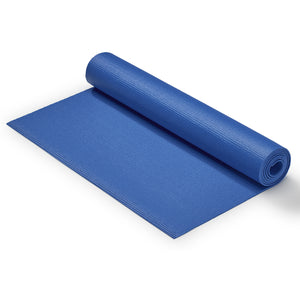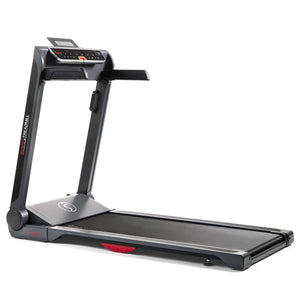We’ve all said it once or twice: “I don’t have time.” The most important lesson in your fitness journey is that exercise doesn’t make time for you; you have to make time for exercise. It’s a sobering fact, but an empowering one.
If you have the right exercise tips for people with busy schedules, there’s no reason you can’t meet and exceed your fitness goals. Will it be easy? No. But will it be worth it? Yes.
With that said, read on to learn the Top 11 Exercise Tips If You Have a Busy Schedule! And read till the end to learn the truth about making time for exercise and the one question you have to answer to start seeing results!
Exercise Tip 1: Choose the Hard Way
When you drive into a parking lot, park far away from your destination. Always take the stairs instead of the elevator. Rather than casually strolling everywhere you go, powerwalk it. Get off the bus one stop early and walk the rest of the way. These seemingly small steps add up and make a difference in the same way that cutting out soda, increasing protein, or getting an extra hour of sleep helps you lose weight.
Need proof? Studies show that walking increases caloric burn almost threefold compared to sitting at a laptop. Incidentally, the study also shows that using a standing desk increases your caloric burn, but only very slightly (1). Walking or running more is where it’s at!
Exercise Tip 2: Work Out While You Watch (or Listen)
When you’re watching something at home, get up and do something! Squats, running in place, jumping jacks, planks, or using a piece of cardio equipment (if you’re lucky enough to have one in your viewing area) are all excellent options.
One study demonstrated that participants who combined exercise with a pleasurable activity (in this case, listening to an audiobook) had a 10-14% higher likelihood of doing a weekly workout and 10-12% more workouts overall (2).
Exercise Tip 3: Use Your Lunch Break
Lunch breaks can feel like a sacred time to be inactive and passive for a while in the middle of a long workday. However, they represent a period of time that you could be using to pursue your health goals. If you’re allowed to eat while you work so that your lunch break is completely free, therein lies one solution to the question of how to make time for exercise. And it needn’t be something fancy; just taking a walk outside counts!
Exercise Tip 4: Squat Breaks, Plank Breaks, and Walk Breaks
During the average workday, there might be some downtime. You can spend it doing nothing—and who wouldn’t want to do that! —or you can put it to use. Do a set of bodyweight squats, hold a plank, or take a short walk around. Don’t get in anyone’s way; don’t get in trouble, either. But if you can’t use that time to build the company, you might as well build yourself.
Exercise Tip 5: Make Your Commute Your Workout
This tip does require that you make some more free time, because something like walking or biking to work will inevitably take longer than driving. Additionally, there are challenges associated with it, like weather conditions, having to pack a clean shirt, and so on. But data derived from the American Council on Sports Medicine indicates that a 30-minute bike ride can burn anywhere from 240 to 600 calories depending on body weight and exertion level (3).
Exercise Tip 6: Work Out at Home
Speaking of traveling, for a lot of people, one of the biggest barriers to working out is getting to the gym. The added time commitment of driving there, changing, exercising, bathing, changing again, and driving back becomes prohibitive. Circumvent this issue with a home gym solution. It doesn’t have to be fancy. A few elastic bands, a kettlebell or two, a mat, and an exercise ball are all you really need to get started. Add a jump rope (or, eventually, a treadmill) and there’s your cardio!
Exercise Tip 7: Do High-Intensity Interval Training
Now we’re getting more into exercise tips for people who do manage to fit exercise into their day but want to get more out of that time. High-intensity Interval Training, or HIIT, is one way to do that. HIIT involves alternating high and low levels of strenuousness in your cardio exercise. So, for example, instead of running at the same speed for thirty minutes, you might alternate two minutes of high-intensity running (faster, harder, sweatier) with one minute of low-intensity jogging or walking. If you repeated this pattern ten times, it would take 30 minutes.
Research shows that HIIT burns more calories in the same amount of time as steady-state cardio (4). So, it is a definite time-saver!
Exercise Tip 8: Do Full-Body Workouts
Rather than working out individual body parts at the gym, full-body workouts allow you to hit your entire body multiple times per week while spending less time in the gym. Full-body workouts are usually done 2-3 times per week. One published narrative review illustrates that full-body workouts are ideal for maximizing efficiency (5).
Exercise Tip 9: Do Upper/Lower Workouts
Upper/Lower workouts similarly allow you to hit your entire body without having to spend a separate workout on each body part. Most of the time, they are done four times per week (upper, lower, upper, lower), or three workouts per week alternating Upper/Lower/Upper the first week and Lower/Upper/Lower the following week. You can even get away with doing each one once per week. Just make sure not to favor one muscle group too much over the others. I’m looking at you, bench press addicts!
Exercise Tip 10: Use Supersets or Other Circuit Options
When you perform one exercise followed by another without resting between them, that’s called a superset. A circuit is a group of two or more exercises combined in this way. A superset is a type of circuit. Using supersets or other circuit options is a great way to condense your workout into a shorter period of time, and one published narrative review indicates that they can be just as effective as non-circuit training for body composition and weight loss and potentially as effective for strength (6).
Exercise Tip 11: Use Volume Strategies
In an exercise context, volume refers to the total amount of work that your muscles are subjected to in a given exercise or workout. The easiest way to increase volume is to do more reps, but at a certain point, sets of 25 are neither time-saving nor effective for building muscle. You could, instead, add sets, but more sets mean more rest time. So, strategies like dropsets, rest-pause sets, sets to failure, weighted stretches, and slow negatives are all ways to increase volume without having to do more sets or reps. The same narrative review mentioned above shows that these strategies can cut training time by HALF (6)! Combine one of these with supersets and you’ll be saving time (and sweating!) all over the place!
And Now: The Truth About Making Time for Exercise, and the One Question You Have to Answer
There are two ways to make time for exercise: create more free time, or use the free time you have more efficiently.
Here are some examples of creating more free time. Can you get up an hour earlier? Can you stop saying yes to every work project that is foisted on you? Can you get a babysitter to take care of the kids once a week while you go get an epic sweat on at the gym?
If you can’t, that’s okay. Sometimes, life is restrictive. Until you can “make time” in your busy schedule, you can always opt for the second option: take the free time you have and use it more efficiently.
So here is the One Question that I promised above: how much of your free time RIGHT NOW is directed towards your goals? Versus, how much time is spent scrolling on your phone, watching a streaming service, or just staring into space? Activities like scrolling and watching are comfortable, and comfort is important, but just how comfortable is it, really, to NOT be making progress toward better health? Does the comfort outweigh the discomfort?
When you can redirect this free time that you have NOW towards your goals, using some of the tips in this article, you’ll start to see yourself as a person who turns thoughts into actions and goals into realities. You don’t wait until conditions change to start working; you start working to change your conditions.
Now that you know the truth, give it some thought, try some of these exercise tips, and before you know it, you’ll look back on the times when you said, “I don’t have time” and laugh!
1. Creasy SA, Rogers RJ, Byard TD, Kowalsky RJ, Jakicic JM. Energy Expenditure During Acute Periods of Sitting, Standing, and Walking. J Phys Act Health. 2016 Jun;13(6):573-8. doi: 10.1123/jpah.2015-0419. Epub 2015 Dec 21. PMID: 26693809. Accessed 6 February, 2023.
2. Kirgios, E. L. (2020). Teaching temptation bundling to boost exercise: A field experiment. Organizational Behavior and Human Decision Processes, 161(Supplement), 20-35. https://doi.org/10.1016/j.obhdp.2020.09.003. Accessed 6 February, 2023.
3. Harvard Medical School (2021, March 8). Calories burned in 30 minutes for people of three different weights. Harvard Health Publishing. Retrieved March 8, 2023, from https://www.health.harvard.edu/diet-and-weight-loss/calories-burned-in-30-minutes-for-people-of-three-different-weights. Accessed 8 February, 2023.
4. Falcone PH, Tai CY, Carson LR, Joy JM, Mosman MM, McCann TR, Crona KP, Kim MP, Moon JR. Caloric expenditure of aerobic, resistance, or combined high-intensity interval training using a hydraulic resistance system in healthy men. J Strength Cond Res. 2015 Mar;29(3):779-85. doi: 10.1519/JSC.0000000000000661. PMID: 25162652. Accessed 8 February, 2023.
5. Ramos-Campo DJ, Andreu Caravaca L, Martínez-Rodríguez A, Rubio-Arias JÁ. Effects of Resistance Circuit-Based Training on Body Composition, Strength and Cardiorespiratory Fitness: A Systematic Review and Meta-Analysis. Biology (Basel). 2021 Apr 28;10(5):377. doi: 10.3390/biology10050377. PMID: 33924785; PMCID: PMC8145598. Accessed 8 February, 2023.
6. Iversen VM, Norum M, Schoenfeld BJ, Fimland MS. No Time to Lift? Designing Time-Efficient Training Programs for Strength and Hypertrophy: A Narrative Review. Sports Med. 2021 Oct;51(10):2079-2095. doi: 10.1007/s40279-021-01490-1. Epub 2021 Jun 14. PMID: 34125411; PMCID: PMC8449772. Accessed 8 February, 2023.

Mark Ludas CPT is a NASM-certified personal trainer with a decade of experience in the fitness industry. After an asthmatic childhood, Mark discovered his natural aptitude for fitness in his late twenties. At age 36, he accomplished a 300+ pound conventional deadlift and 280+ high-bar squat as a 6’5” 170-pound ectomorph on a fully vegan diet, all after just one year of proper self-programming. Mark is the founder of Resistance Quest Fitness, established in 2016. Additionally, he is a writer, actor, model, and musician. Find him on Instagram, Facebook, Youtube, and at www.resistancequest.com.


























Add Your Name & Email
Please enter your name and email to continue.We won’t display your email publicly.